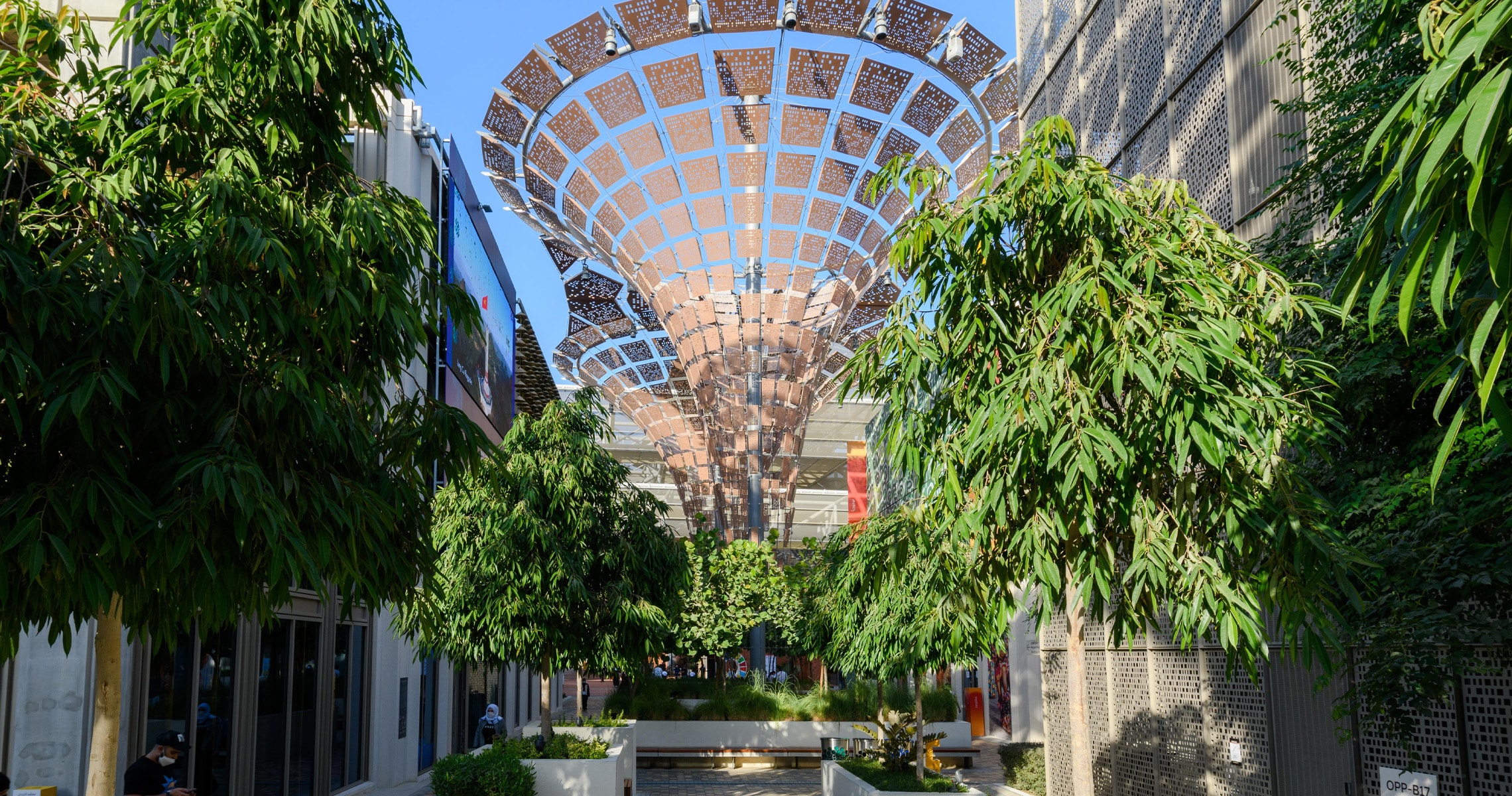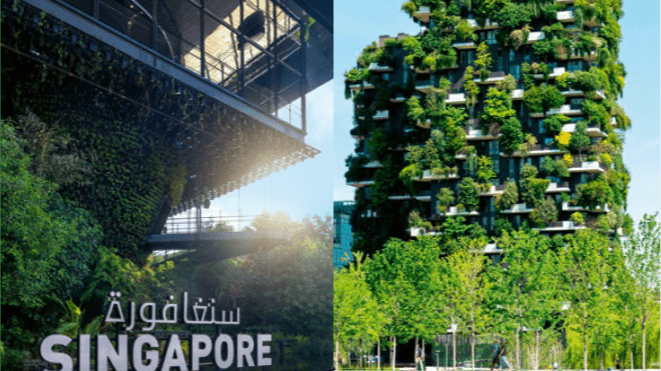GREEN STREETS
Green streets
A garden city with robust infrastructure can become an edible garden city through purposeful landscape and by using native food knowledge
Bjorn Low, Co-founder and Executive Director, Edible Garden City
From Expo 2020 Dubai's Theme Week Insights series
The resilience of human societies hinges on the health of our natural environment. As cities expand, can we find a way to preserve a slice of nature in our urban spaces?
As the world seeks to counter the effects of climate change, urban planners are calling for cities where nature takes centre stage.
Many cities are stepping up as part of long-term plans for resilience. Dubai has made a concerted effort to harmonise its rapid development with nature. According to Mahra Salem Al Shamsi, Head of the Urban Design Section at Dubai Municipality, Dubai has always taken “into consideration the location, the temperature and water stress so we can find balance with nature and urbanisation. When this balance is missing, cities become at odds with nature”.
Seeking to double down on this commitment, Dubai has outlined a 2040 Urban Master Plan that will continue the formal inclusion of environmentally conscious development into its growth strategy. By 2040, the plan stipulates, 60 per cent of the emirate will be dedicated to nature reserves, effectively doubling the city’s green spaces.
The city is well on its way to achieving this goal: as of 2022, 95,000 native species had been planted across sites all over Dubai, including ghaf trees at Mushrif Park and myriad ghaf, neem and date palms at Expo City Dubai.
While newer cities like Dubai are able to write environmentalism into flourishing urban visions, older cities can also reconcile their built environment with nature by ‘retrofitting’ green strategies. Medellín in Colombia is a prime example. “We need to regenerate the city and reconcile the city with nature,” says architect and urbanist Jorge Pérez- Jaramillo, Medellín’s former Director of Planning.
To do so, the small, nature-dependent city implemented a ‘social urbanism’ strategy that engaged the community to revitalise informal settlements with green infrastructure in harmony with the city’s natural rivers and valleys. In addition to sustaining cities, green spaces can also nourish the people who live there through urban agriculture.
Urban farms create nature stewardship among city residents and address food security, notes Bjorn Low, Co-founder and Executive Director of Edible Garden City, which champions the grow-your-own-food movement in Singapore. “A garden city with robust infrastructure can become an edible garden city through purposeful landscape and in using native food knowledge,” he says.
Hundreds of edible urban gardens are making Singapore less dependent on imported food, complementing the national Green Plan 2030. “We’re intensifying our gardens, parks and urban spaces and are planting more than a million more trees by 2030,” explains Desmond Lee, Singapore’s Minister for National Development. Rooftop gardens and ‘living walls’, such as the vertical gardens on the exterior of the nation’s Expo 2020 pavilion, are proliferating as a result.
While regulations such as national urban plans and policies are important in securing space for nature in an urbanising world, it will take multilateral efforts from a variety of stakeholders to truly green our cities. While regulations such as national urban plans and policies are important in securing space for nature in an urbanising world, it will take multilateral efforts from a variety of stakeholders to truly green our cities. From city planners with long-term visions to boundary-pushing architects to the community members tending rooftop gardens and urban farms, green city spaces must be advocated by all because they are in the interest of all.
Did you know?
According to researchers from the University of Queensland, Australia, spending just 30 minutes in a green space can reduce blood pressure and depression
The Singapore pavilion at Expo 2020 Dubai showcased the national vision to integrate nature into the heart of the city (left); greening cities can be as simple as retrofitting existing infrastructure with nature (right)
We'd love to connect with you
For general enquiries, please fill out the contact form or send an email to impact@expodubaigroup.ae

